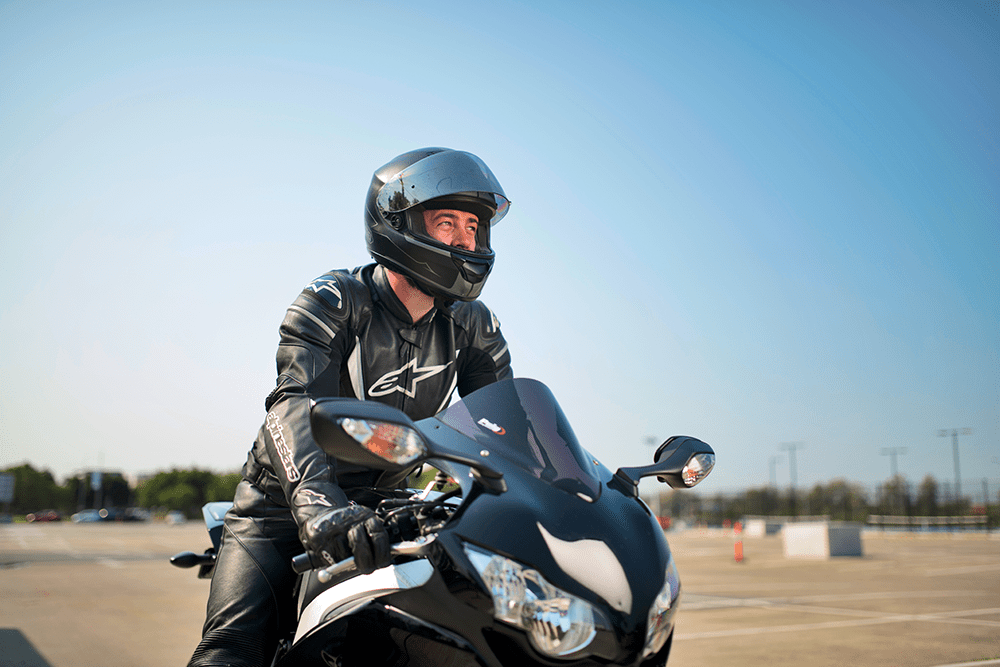
Bicycle, Powered Bicycle, Moped, Motorbike
- No impact on credit score
- Fast turnaround times
"*" indicates required fields

"*" indicates required fields
Bicycle, powered bicycle, moped, motorbike: there are a lot of terms out there for two-wheeled vehicles. We all know what the difference between a bicycle and a motorbike is, but what’s the line between a powered bike and a moped? What about the one between a moped and a motorbike? If you’re looking for motorcycle financing, then making sure you’ve got the right kind of bike in your sights is the first thing you should do, so let’s talk definitions!

You know a bicycle when you see one. They’ve got metal frames designed as much for weight efficiency as for structural strength and usually have handlebar-mounted gear shifters and brake handles, though some have gear shifters on the frame itself. Most bicycles simply have pedals that drive a chain that turns the back wheel. However, some have an auxiliary motor that assists the rider. Powered bicycles skirt the boundary between a bicycle and a proper motor vehicle, because the motor is still not the primary power source. They are great for commuters who need a little boost to their speed, for example when riding uphill in traffic.
Laws surrounding powered bicycles vary between states and territories and in certain cases are extremely restrictive in terms of fuel source and maximum power. In Queensland, it is illegal to ride internal combustion engine-powered bicycles on public paths, but electric motors are fine. Every state and territory but the Northern Territory also restricts powered bicycle motors to 200 or 250 watts of power. If you’re thinking of buying a powered bicycle, then make sure you’re familiar with the regulations in your city and state.
Mopeds are interesting creatures. Technically classified as light motorcycles, mopeds originally had pedals and more closely resembled a powered bicycle with a larger engine that provided more power than a human being could muster. Over time, most manufacturers stopped installing pedals and turned them into purely motor-powered vehicles.
In Queensland, Western Australia, the Northern Territory and South Australia, you don’t actually need a motorcycle rider’s licence to use a moped with an engine displacement of less than 50mL—a simple driver’s licence will do. Everywhere else, you will need a rider’s licence, and every state requires a rider’s license for mopeds with an engine displacement of greater than 50mL.
A motorcycle is a two-wheeled vehicle whose entire power source is an engine. Usually, they are fuelled by petrol or diesel, but electric motorcycles are becoming increasingly common. There is plenty of variety to be found in this classification, because there are far fewer restrictions on design and power output for motorbikes compared to mopeds and powered bicycles. For instance, there are different styles of motorcycle for sports, racing, long distance cruising and urban traffic.
The laws on motorcycles are quite clear: you have to have a motorcycle rider’s licence to operate them. Getting a class R licence requires that you undertake motorcycle-specific training and pass an examination for knowledge of the traffic laws regarding motorcycles, as well as learning safe driving habits. Furthermore, only certain motorcycles are permitted for learner riders under the Learner Approved Motorcycle Scheme. The LAM scheme limits riders to engines with a displacement of at most 660mL and a power-to-weight ratio of up to 150 kilowatts per tonne. If you want to know more about licensing laws, take a look at our article, Sorting Out Licensing for Two-Wheeled Transport.
"*" indicates required fields
| Lender | Comparison Rate | Source |
|---|---|---|
| 360 Finance | 7.76%* | Link to source |
| Westpac | 7.69%* | Link to source |
| St George | 6.13%* | Link to source |
| CBA | 9.9%* | Link to source |
| BOQ | 8.19%* | Link to source |
| RACQ | 6.16%* | Link to source |
| CUA | 7.16%* | Link to source |
